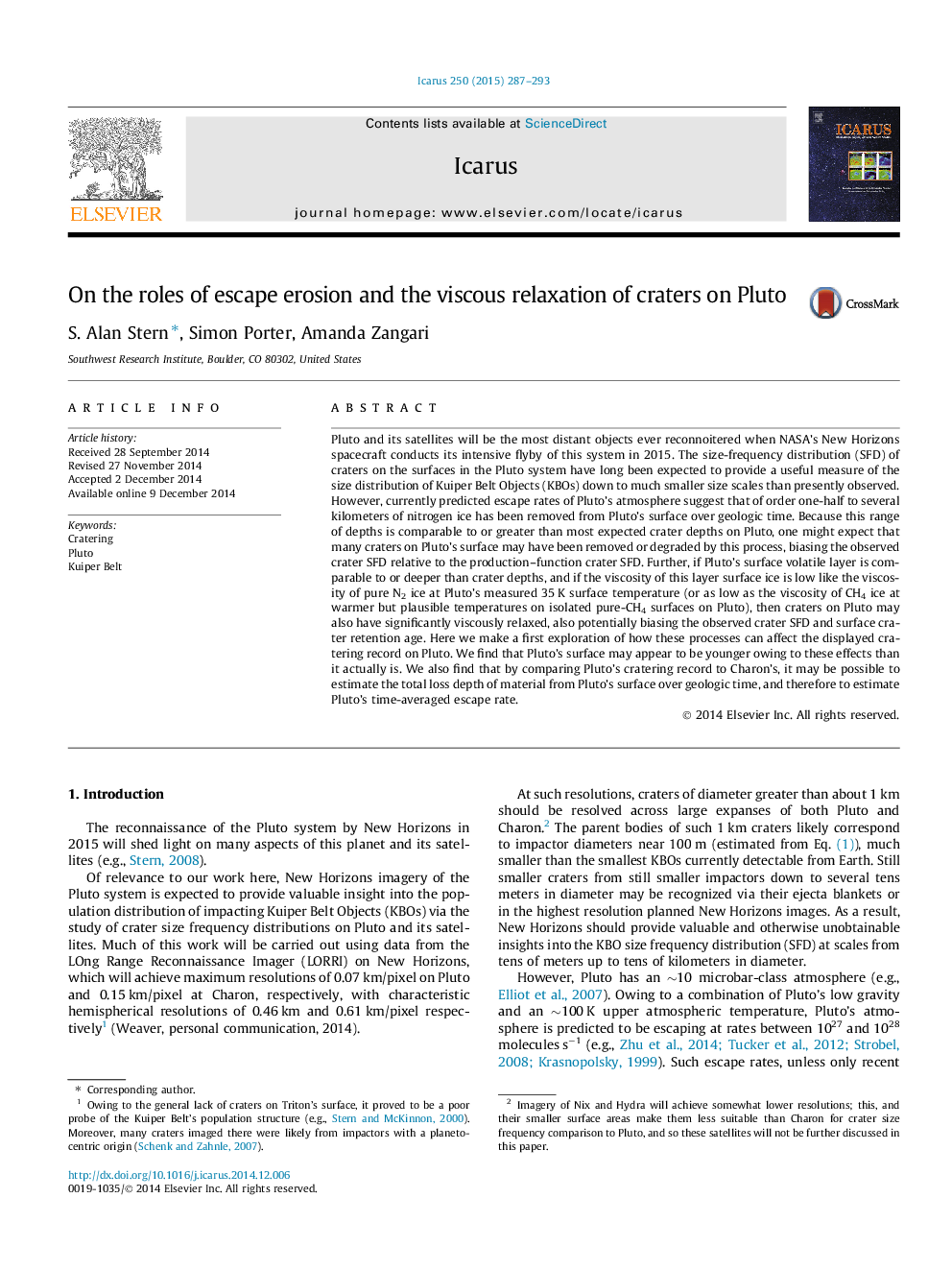| Article ID | Journal | Published Year | Pages | File Type |
|---|---|---|---|---|
| 8136826 | Icarus | 2015 | 7 Pages |
Abstract
Pluto and its satellites will be the most distant objects ever reconnoitered when NASA's New Horizons spacecraft conducts its intensive flyby of this system in 2015. The size-frequency distribution (SFD) of craters on the surfaces in the Pluto system have long been expected to provide a useful measure of the size distribution of Kuiper Belt Objects (KBOs) down to much smaller size scales than presently observed. However, currently predicted escape rates of Pluto's atmosphere suggest that of order one-half to several kilometers of nitrogen ice has been removed from Pluto's surface over geologic time. Because this range of depths is comparable to or greater than most expected crater depths on Pluto, one might expect that many craters on Pluto's surface may have been removed or degraded by this process, biasing the observed crater SFD relative to the production-function crater SFD. Further, if Pluto's surface volatile layer is comparable to or deeper than crater depths, and if the viscosity of this layer surface ice is low like the viscosity of pure N2 ice at Pluto's measured 35Â K surface temperature (or as low as the viscosity of CH4 ice at warmer but plausible temperatures on isolated pure-CH4 surfaces on Pluto), then craters on Pluto may also have significantly viscously relaxed, also potentially biasing the observed crater SFD and surface crater retention age. Here we make a first exploration of how these processes can affect the displayed cratering record on Pluto. We find that Pluto's surface may appear to be younger owing to these effects than it actually is. We also find that by comparing Pluto's cratering record to Charon's, it may be possible to estimate the total loss depth of material from Pluto's surface over geologic time, and therefore to estimate Pluto's time-averaged escape rate.
Keywords
Related Topics
Physical Sciences and Engineering
Earth and Planetary Sciences
Space and Planetary Science
Authors
S. Alan Stern, Simon Porter, Amanda Zangari,
